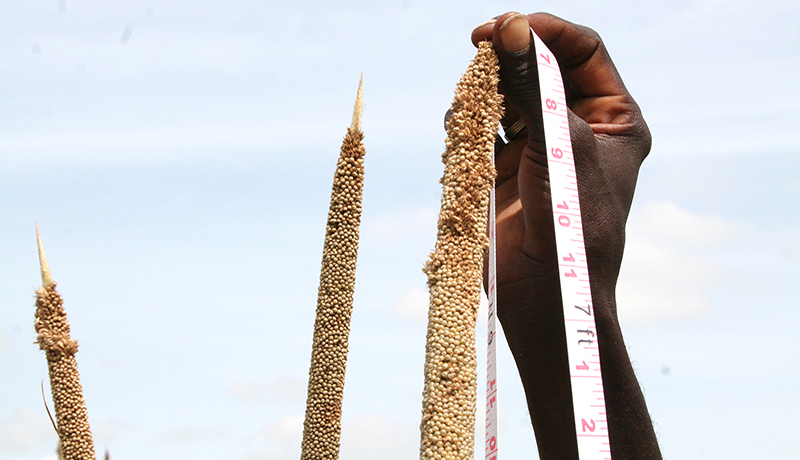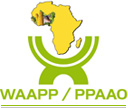
Senegal 17 September 2018 /
Despite recent breakthroughs in research, insufficient production and climate change are challenging millet researchers anew, an international conference has heard. Communities are looking up to scientists to design new varieties that can boost productivity, feed the people of West Africa, reduce hunger and poverty.
Combined with pests’ attack, inadequate access to markets, and other emerging challenges, researchers working for this crucial staple find themselves needing to step up their game to identify cutting-edge solutions to revitalize the millet sector.
Organized recently in Thiès, Senegal, by the Feed the Future Innovation Lab for Collaborative Research in Sorghum and Millet (SMIL) and other national and regional research partners, the conference documented the challenges and identified new research priorities to increase productivity, consumption, and close the income gaps.
Millet represents a major staple for most of the people in Senegal and West Africa in general. National and regional development plans rely on millet to achieve food and nutrition security.
Forecasts show that under current climate trends, there could be a 30 percent drop in millet yield by 2050, according to Dr. Alioune Fall, Director of the Senegalese Institute of Agriculture Research.
Expanding productivity to meet the demand of the growing Senegalese and West African population will partly require innovative and adaptable research solutions.
The consortium of research institutions coordinated by the West and Central African Council for Agriculture Research and Development (CORAF) are already undertaking research on millet and other dry cereals. So far, some of the results include the introduction of drought-resistant and hybrid millet varieties to producers of the region.
The Centre for the Improvement of the Adaptation to Drought (CERAAS) based in Senegal works collaboratively with CORAF and SMIL to generate innovative varieties for millet and other dry cereals.
Millet Biofortification?
Nutrition has been elevated to the highest level of state in Africa with Heads of States committing to ending child stunting and bringing down stunting to 10% and underweight to 5% by 2025.
The biofortification of millet could be a relatively cost-effective means to tackle micronutrient malnutrition for the people of West Africa. Not only did the Thies conference explore options in this regard, but they also discussed ways to use agro-food processing technology and agricultural mechanization to step up production.
Nearly 90 participants from Mali, Burkina Faso, Niger, USA, France, England, and India attended the event. They were carefully selected to represent the broad spectrum of the millet value chain. This includes actors in research, processing and marketing, farmer groups, businesses, the private sector, and seed companies.
CORAF’s Dry Cereal Research Center, set up under the West Africa Agriculture Productivity Program, an initiative of the Economic Community of West African States leads and shares its research benefits to all the 23 countries of West and Central Africa. Meantime, through the West Africa Seed Program, a program funded by the United State Agency for International Development and soon through the Partnership for Agricultural Research, Education and Development, CORAF shall work to ensure the availability of quality agri-inputs to West African farmers. One of the critical crops under this collaborative agreement is millet.







